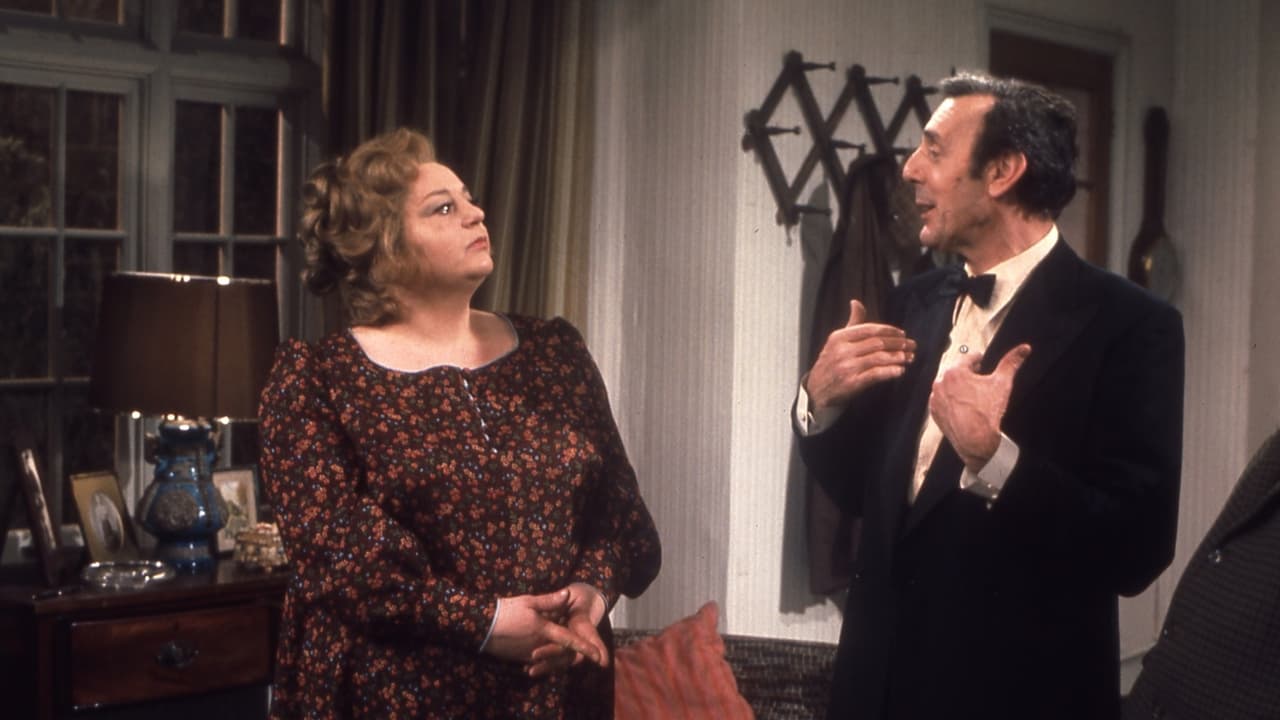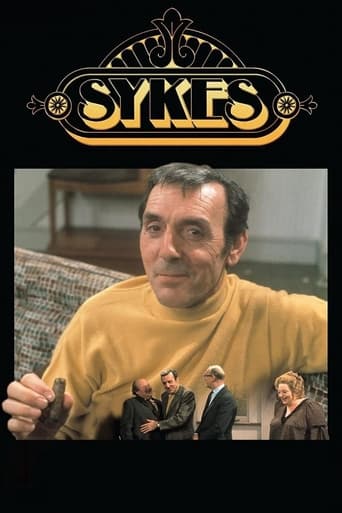Jemima
It's a movie as timely as it is provocative and amazingly, for much of its running time, it is weirdly funny.
ShadeGrenade
In the early '70's, the B.B.C. revived several hit sitcoms from the previous decade, including 'Steptoe & Son', 'The Likely Lads', 'Till Death Us Do Part', 'Whacko!', and of course, 'Sykes'. I.T.V. had been enjoying success with the likes of 'On The Buses', the 'Doctor' series, and 'Please Sir!' and the B.B.C. wanted to compete. In the new medium of colour, the resurrected shows took on a new lease of life.Each week, the pounding of a drum would signal the start of a new 'Sykes' episode. The new show was much the same as the earlier one; he still lived in Sebastopol Terrace ( though at number 28, not 24 ) with twin sister Hattie ( Hattie Jacques ), and the next-door neighbour was the pompous Charles Fulbright Brown ( Richard Wattis ). Added to the mix were Deryck Guyler ( fresh from 'Please Sir!' ) as a policeman with a fondness for food named 'P.C. Turnbull' ( known to his friends as 'Korky' ), and Eric had an admirer in the shape of Madge from the bread shop ( Joan Sims ) who called him 'Ricky' and kept him supplied with cakes. Korky's wife was never seen, but her reedy voice ( courtesy of Eric ) sounded not unlike that of 'Minnie Bannister' from 'The Goon Show'. Eric's character was that of an overgrown boy, constantly trying out new things ( such as building his own burglar alarm or redecorating ) but never quite getting the hang of them. Hat ( or 'Harriet' as he often called her ) was like a mother figure, always telling him off but defending him when others did the same. She frequently talked to the cuckoo clock on the wall, which she called 'Peter'.In one episode, Eric and Hattie returned from holiday only to find an old tramp ( Roy Dotrice ) had moved in and made himself at home ( Eric had left the front door open! ). In another, they went to a holiday camp where Eric caused chaos by refusing to get up early in the morning. Another memorable episode had him getting a job in a factory, and almost causing a strike by working too slow and then too fast! When Eric, Hattie and Korky went caravanning, they fell out and hurled plates of porridge at one another! Another time they bought a boat and almost got blown up by a mine left over from W.W.2. "Its alright!", said Hat: "I think its one of ours!".Some of the early episodes were remakes of the '60's shows, such as 'Sykes & A Stranger'. The original featured Leo McKern as an ex-con who returns to honour a old childhood promise to marry Hattie. For the remake, Eric enlisted the services of his old friend from 'The Goon Show' days Peter Sellers ( in a rare B.B.C. sitcom appearance ).'Sykes' blend of visual and character driven comedy made it a big hit which ran for the remainder of the decade. Wattis sadly passed on in 1975, and the show continued but was noticeably poorer for his absence. Joy Harington came aboard as another neighbour - Miss Rumbelow. It ended in 1979 with the appalling 'The B.B.C. Honours Sykes'. I say appalling because it ruined the illusion that the show was not a sitcom! In 1980, Hattie died. The B.B.C. wanted Eric to continue alone, but he rightly declined. The chemistry between the leads had made 'Sykes' special.Repeats have been few and far between. Network issued the 1972 series on D.V.D. in 2004, but its ongoing dispute with the B.B.C. means we are unlikely to get more releases, and '2entertain' do not seem keen to pick up the baton.A few years back, the now-defunct satellite channel 'U.K. Drama Daytime' put on most - but not all - of the shows. They showed that 'Sykes' still has the ability to delight and amuse in equal proportions.
BritishFilms1
Eric Sykes and Hattie Jacques play twins, living in a small village, at 24 Sepastopol Terrace.Most of the classic episodes revolved around Eric Sykes' daydream disasters and Hattie Jacques' bewilderment.Other characters include Mr Brown [Richard Wattis] and village policeman Corky [Deryck Guyler].The programme originally ran on BBC in black and white from 1960 to 1965 and was revived in colour from 1972 to 1979. Most of the colour episodes were remakes of classic episodes from the 1960s.

